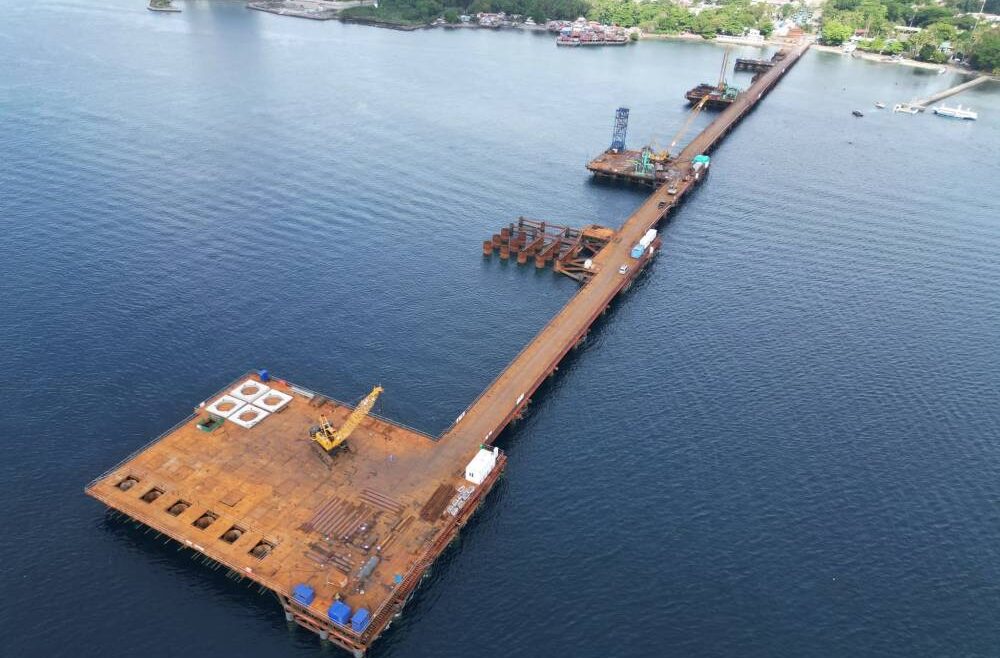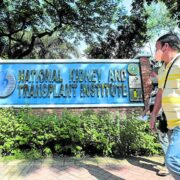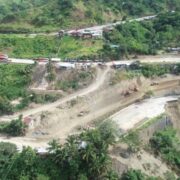Longer legal battle seen over Samal-Davao bridge

DAVAO CITY—Environmentalists here rejoiced over the Supreme Court’s issuance of a writ of kalikasan on the Samal Island-Davao City Connector project, even as they prepare for a longer legal battle ahead.
Lawyer Romeo Cabarde, director of the Ateneo Public Interest and Legal Advocacy (Apila) Center, said the fight was still far from over but the issuance by the high court of the writ was already worth celebrating.
Representatives of the groups Ecoteneo, Interfacing Development Interventions for Sustainability Inc. (Idis), Sustainable Davao Movement, and Dyesabel Philippines Inc. had petitioned the court for the issuance of the writ. But the court stopped short of granting their prayer for a temporary environmental protection order (Tepo). Instead, the high court referred the prayer for Tepo to the Court of Appeals (CA) in Cagayan de Oro City.
Crucial
According to the Supreme Court, the writ of kalikasan is a remedy available to individuals and groups “on behalf of persons whose constitutional right to a balanced and healthful ecology is violated, or threatened with violation by an unlawful act or omission of a public official or employee, or private individual or entity, involving environmental damage of such magnitude as to prejudice the life, health or property of inhabitants in two or more cities or provinces.”
Cabarde said the Tepo was crucial in having the P23.52-billion Chinese-funded bridge project suspended.
“If granted, the Tepo would temporarily stop the construction until the court can evaluate the case more fully. This decision could come quickly, given the urgency and nature of environmental harm,” he said.
The Department of Public Works and Highways (DPWH) in Davao region on Wednesday told reporters that work on the bridge continued as they did not yet receive a copy of the writ.
Dean Ortiz, spokesperson for the regional DPWH, said they had no instruction from the court whether to stop the project so they continued with the construction activities.
Cabarde clarified that the issuance of the writ did not immediately mean the bridge project was totally canceled. It only meant that the high court found sufficient concern for serious environmental damage that required immediate investigation and response.
He said the high court still gave the DPWH, the Department of Environment and Natural Resources, the Samal Island Protected Landscape and Seascape Management Board, and the China Road and Bridge Corp. a nonextendible 10 days to file a verified return, which is their formal response to the petition that must address the environmental claims and defend their actions.
‘Contested’
After the verified return is submitted and a possible Tepo ruling made, the court will evaluate scientific evidence, testimonies and impact assessments, including site inspections or inputs from experts, Cabarde said.
“If the court find sufficient basis, it may make the Tepo permanent, effectively halting the project. Or, it may dismiss the petition if respondents prove no grave environmental harm will occur,” he added.
“These are the legal consequences of the issuance of the writ of kalikasan. In short, the bridge is not yet stopped, but it is now legally and publicly contested,” Cabarde emphasized.
He said the next 10 to 30 days would be crucial for determining whether the project would be paused or allowed to continue unimpeded.
Natural heritage
“The [high] court’s issuance of the writ sends a strong signal: no development, no matter how grand or well-funded, is above the law—especially when it threatens the environment and the lives and livelihoods of communities,” read a joint statement of Green Juris, Idis, Apila and Ecoteneo.
The petitioners welcomed the decision saying it was a “critical affirmation of the public’s right to a balanced and healthful ecology enshrined in the Constitution.”
The petitioners had raised grave concerns over the irreversible damage that the present alignment of the bridge could inflict on vital marine ecosystems, particularly the Paradise Reef on Samal Island and the Hizon Marine Protected Area in Davao City.
These sites, the environment groups said, are not only ecologically rich but also part of the natural heritage and identity of Davaoeños and the people of Mindanao.
“This is not the end of the road—but it is a significant step forward. Nature has spoken through the people. Now, the law has listened,” said the joint statement.

















